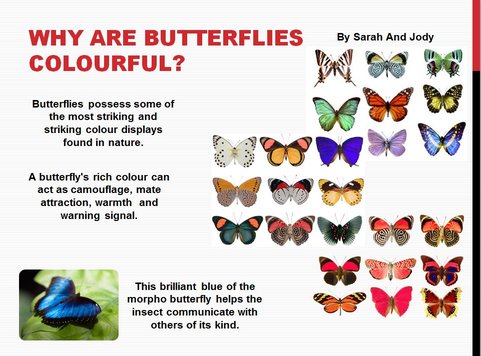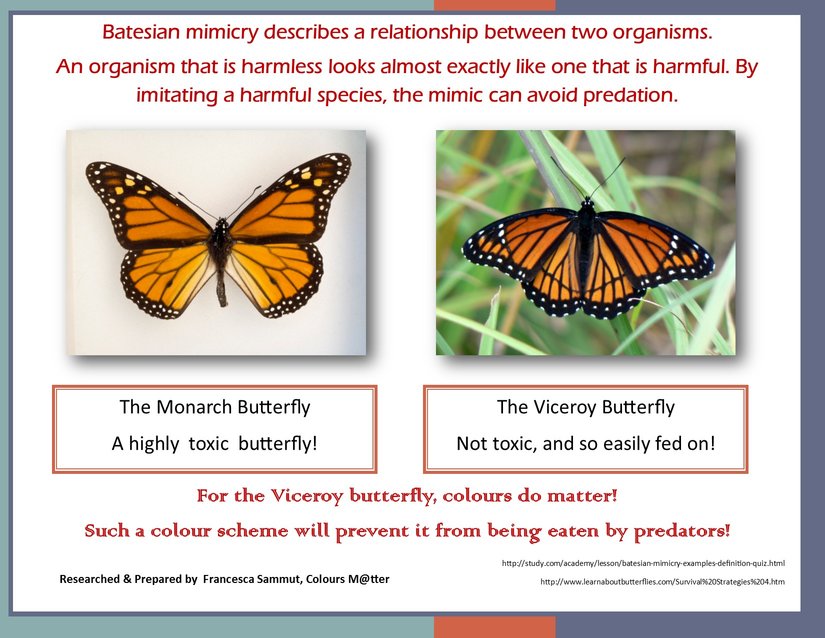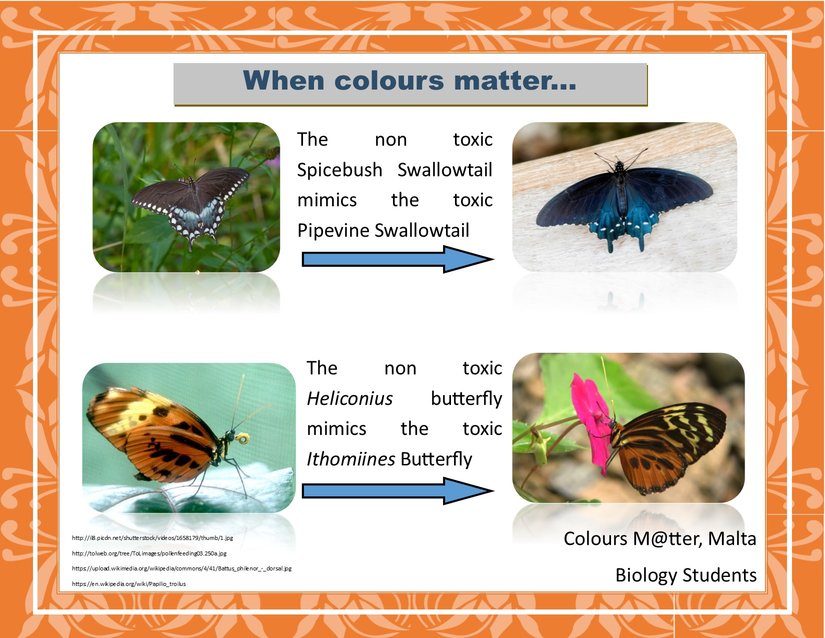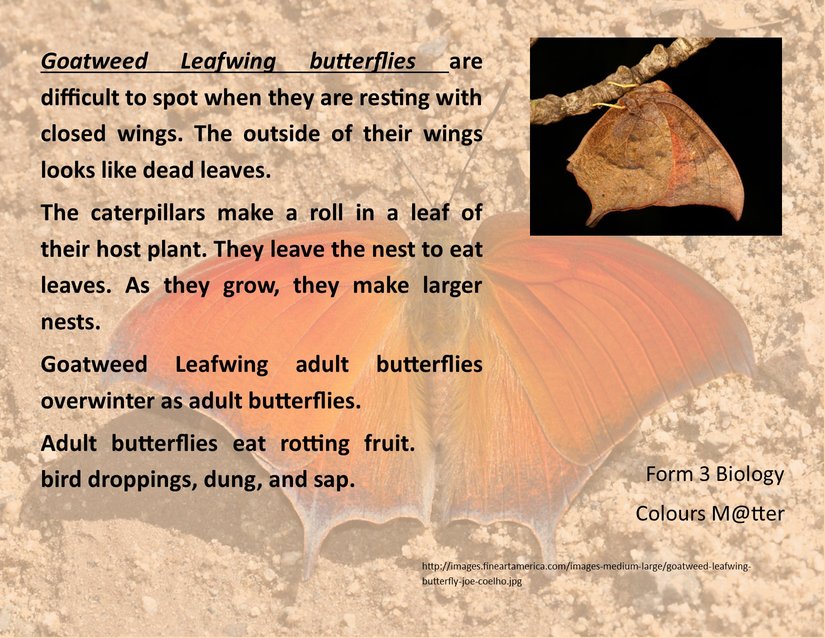Why do Insects Visit Colourful Flowers?
This presentation was prepared as a result of a discussion in class on the topic of sexual reproduction in flowers.

Camouflage & Mimicry
The following presentation was used as the basis for a discussion amongst Form 3 students on the topic: Importance of colours in animals.

Why are flowers so colourful?
The colours of flowers are not just for humans to enjoy, but actually serve far more significant purposes. Flowers need to reproduce, and for those plants that depend on reproduction through pollination, colours are very important. Brightly coloured flowers attract insects and bees, which are the largest contributors to plants’ reproduction, as they can carry pollen to other plants. Thus, flowers are brightly coloured to attract insects. The following presentation by Sarah and Shanice, describes in further details the importance of brightly coloured flowers.
Top 5 colourful animals
The Maltese Biology students were divided into 5 groups and each group had to present 5 colourful animals according to the group of organisms assigned to them. I must admit they chose very colourful ones, some of which are even new to me! Enjoy :)
Top 5 Fish
Top 5 Reptiles

Top 5 Amphibians
Top 5 Birds
Top 5 Invertebrates
Why are butterflies colourful?
The colours of butterfly and moth wings may serve several purposes. Colours are often used in courtship, so that male and female butterflies recognize each other as the correct species. Bright colorus may also serve to warn birds or other predators that a particular butterfly, such as a Monarch or a Pipevine Swallowtail, is bad-tasting. Other butterflies and moths, although perfectly edible, may have colours that "mimic" the bad-tasting species and thereby gain protection for themselves. Finally, certain colour patterns may help the butterfly or moth blend into its background and be protected from birds or other would-be predators by background resemblance. These protective colours can be bright and other species are dull in colour.
The following 3 posters prepared by Biology students show reasons why butterflies have become adapted to having colourful wings:




Are Bacteria colourful?
The Maltese Biology students observed images of Bacteria and were curious whether Bacteria really had colourful pigments or whether they were stained to be easily observed. The following is the result of their research: